India’s food industry isn’t just growing—it’s experiencing an unprecedented transformation. Rooted in centuries of diverse culinary traditions, today’s market is being reshaped by a perfect storm of economic and cultural forces.
This isn’t merely evolution—it’s a culinary revolution where ancient recipes meet modern business models. In this landscape of flavor, tradition, and technological advancement, numerous profitable food business ideas await those ready to serve India’s evolving palate. Let’s explore how you can transform your culinary passion into a thriving enterprise that satisfies both the soul and the bottom line.
1. Cloud Kitchens
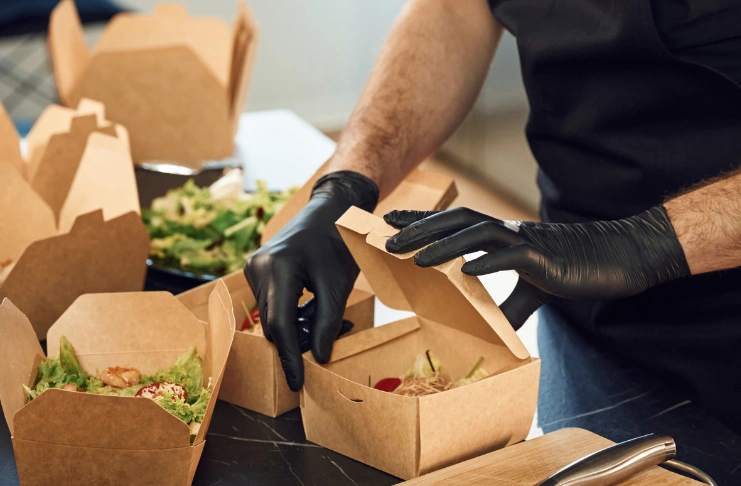
Cloud kitchens—also called ghost kitchens—are delivery-only establishments that operate without dine-in spaces. They cater exclusively to online food orders through food delivery platforms, offering a low-overhead and highly scalable business model that fits perfectly into India’s fast-paced, urban food culture.
Why It’s Popular:
Cloud kitchens have taken the food industry by storm, especially in urban areas. Here’s why entrepreneurs are flocking to this low-risk, scalable business model:
- No expenses on dine-in furniture or front-house staff.
- Run multiple food brands from one kitchen.
- Easily expand based on demand trends and analytics.
Startup Costs & Returns:
Starting a cloud kitchen doesn’t require a hefty investment in dining space, making it a low-investment and ideal choice for budget-conscious entrepreneurs. Below is an overview of the startup investment required and the expected monthly returns:
- Startup Cost: ₹5–10 lakhs
- Monthly Profit: ₹1–3 lakhs
Cloud kitchens offer a lucrative business entry point into the food business with reduced risk and high scalability, perfect for entrepreneurs embracing the online delivery wave.
2. Quick Service Restaurants (QSR)
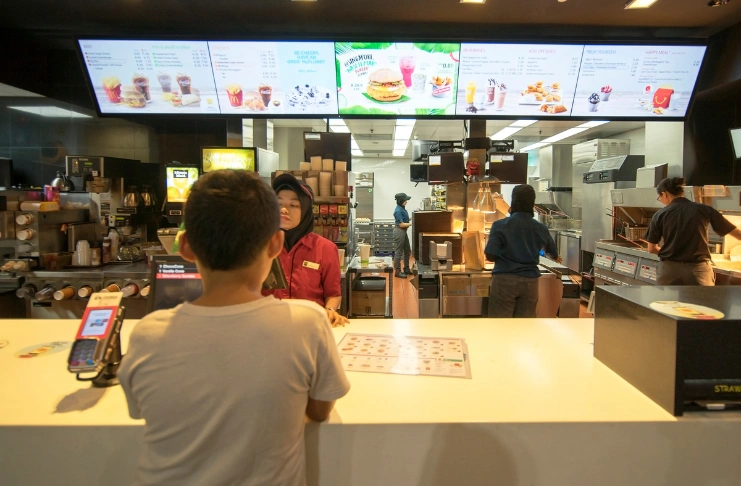
QSRs—Quick Service Restaurants—are a type of fast food franchises that fast-paced eateries focused on affordable pricing, standardized menus, and quick delivery. These outlets are popular across metros and tier 2 cities due to their speed and convenience.
Why It’s Popular:
QSRs are designed to serve fast, convenient, and affordable meals, making them a favorite choice for customers on the go. Whether in malls, busy business districts, or on the streets, QSRs cater to the increasing demand for speed and value. Let’s explore why this business model is thriving:
- Often located in malls and busy business districts.
- Popular QSRs like Wow! Momo has 425+ outlets.
- Streamlined processes ensure quicker service.
Startup Costs & Returns:
QSRs offer great scalability, especially if you choose to go the franchise route. Here’s a breakdown of what you can expect in terms of initial investment and profitability:
- Initial Investment: ₹15–25 lakhs
- Payback Period: 12–18 months
The QSR model balances affordability, speed, and scalability—ideal for entrepreneurs looking for predictable returns and franchising potential.
3. Food Trucks
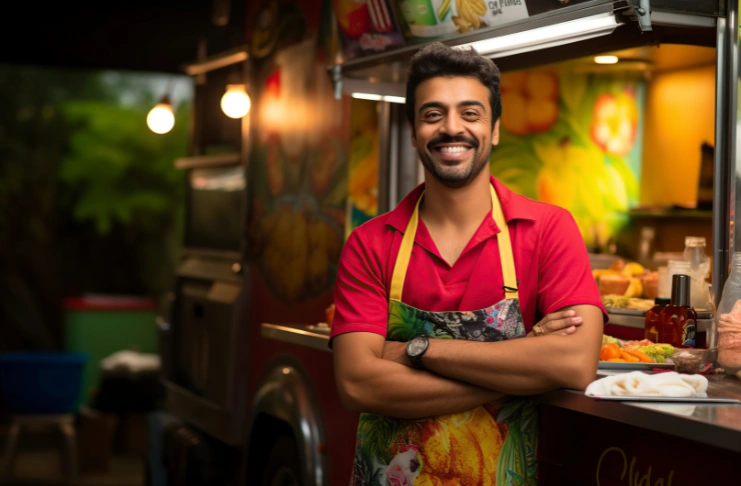
Food trucks provide a mobile alternative to traditional restaurants, offering dynamic menus and the ability to reach varied customer bases across different locations, festivals, and events.
Why It’s Popular:
Food trucks offer a unique opportunity to bring food directly to the customers, allowing business owners to explore dynamic locations and build a following. These mobile restaurants offer a fresh approach to food service and have a unique charm that attracts a wide range of customers. Here’s why food trucks are becoming a hot trend:
- Operate near offices, colleges, or night markets.
- Great for testing unique dishes affordably.
- No real estate hassles, lower setup cost.
Startup Costs & Returns:
While food trucks offer flexibility and low setup costs, the returns can vary depending on location and product offerings. Let’s take a closer look at the initial investment and how quickly you can start making profits with this venture:
- Setup Cost: ₹10–20 lakhs
- Weekly Revenue: ₹50,000–1 lakh
A food truck is a vibrant, mobile business that merges culinary creativity with entrepreneurial freedom—ideal for chefs looking to stand out.
4. Organic & Health Food Cafes

With growing awareness around wellness, organic and health food cafes are becoming go-to spots for urban millennials and Gen Z consumers who prioritize sustainability and nutritious eating.
Why It’s Popular:
With health-conscious consumers on the rise, organic and health food cafes are quickly becoming the go-to destination for millennials and Gen Zers who prioritize wellness in their daily lives. Here’s why this concept continues to resonate with today’s consumers:
- Tap into the rising demand for keto, vegan, and gluten-free.
- Perfect for high-end residential and coworking areas.
- Great visual branding opportunity via social media.
Startup Costs & Returns:
Opening a health-focused café requires a solid initial investment, especially if you are aiming for an upscale setting. Here’s what to expect in terms of investment and returns:
- Startup Cost: ₹10–20 lakhs
- Profit Margin: 20–30%
Health-focused cafes cater to a rising demand for mindful eating, making them a rewarding business for wellness-driven entrepreneurs.
5. Tiffin Services & Meal Subscriptions
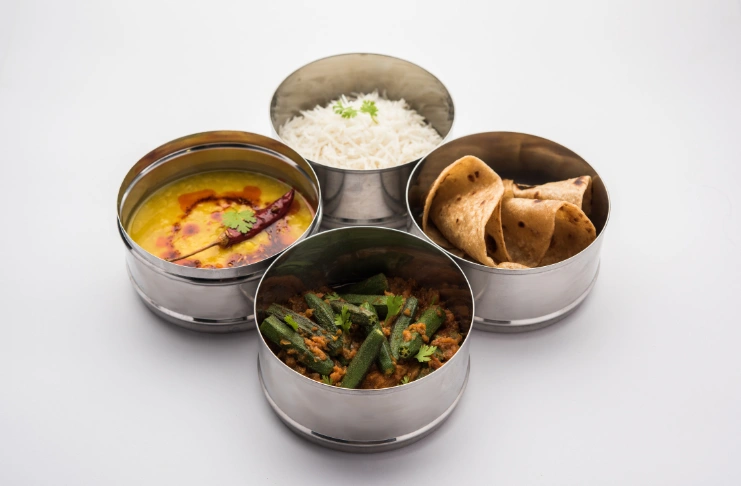
Tiffin services offer freshly cooked, home-style meals and meal kits —often through daily or monthly subscription models—meeting the nutritional and convenience needs of busy professionals and students.
Why It’s Popular:
Tiffin services are an essential part of urban India’s food landscape, offering freshly cooked, home-style meals to busy professionals, students, and families. Let’s dive into the factors that make this business so appealing:
- Subscription models ensure consistent income.
- Operate from home kitchens or shared spaces.
- Builds trust through personalized customer service.
Startup costs & Returns:
The low-cost entry of starting a tiffin service, particularly from home or a shared kitchen space, makes this a cost-effective business option. While the returns are consistent due to the subscription model, here’s an overview of the financials you should expect when starting your own tiffin service:
- Startup Cost: ₹1–2 lakhs
- Profit Margin: 20–30%
For home cooks and small business aspirants, tiffin services represent a stable, community-driven food venture with consistent returns.
6. Bakery & Confectionery
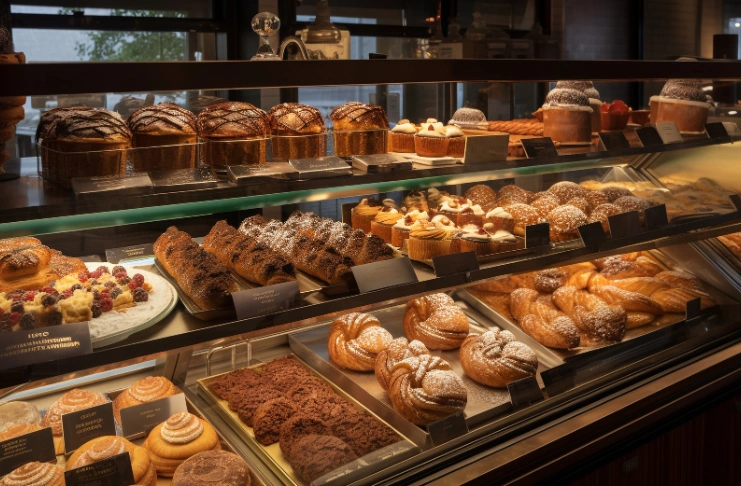
India’s appetite for gourmet desserts and artisanal baked goods has seen a major surge, especially through social media platforms like Instagram. Homegrown bakeries and niche confectioners are meeting festive and everyday demand with unique offerings.
Why It’s Popular:
With a strong demand for both festive and everyday indulgence, bakeries and confectionery businesses are a staple in India’s food industry. Here’s why this business continues to thrive across various markets:
- Sales spike during events like Diwali, Christmas, and Raksha Bandhan.
- Start with small batches and scale gradually.
- Aesthetic cakes and treats attract online customers.
Startup Cost & Returns:
Starting a bakery can be as small-scale as operating from home or as large-scale as opening a retail store. Whether you’re catering to a niche market or aiming for high-volume sales, starting a bakery is an excellent food business idea; here’s what you need to know about the investment and profitability of running a bakery:
- Initial Setup: ₹1–3 lakhs (home-based)
- Profit Margins: 25–40%, depending on customization and seasonal sales
Whether from a home kitchen or a small storefront, bakeries can thrive on quality, creativity, and consistent social media visibility.
7. Ice Cream & Frozen Dessert Parlors

India’s warm climate and evolving palate make it a ripe market for artisanal ice creams and frozen desserts. Flavors now span from local favorites to global indulgences, including dairy-free and vegan options.
Why It’s Popular:
The demand for ice cream and frozen desserts continues to be strong, driven by India’s warm climate and the growing trend toward unique, artisanal flavors. Here’s why ice cream parlors are an evergreen business idea:
- Variants like paan kulfi, gulkand gelato, and jamun sorbet.
- Ice cream sees stable year-round sales in India.
- Brands like Naturals and Baskin-Robbins offer low-risk entry.
Startup Costs & Returns:
Ice cream parlors come with a manageable initial investment and offer the opportunity to generate substantial profits, especially if you’re located near high-footfall areas like malls, beaches, or markets. Let’s take a look at the costs and returns associated with starting an ice cream business:
- Setup Investment: ₹10–30 lakhs (standalone or franchise)
- Monthly Profit: ₹1–2 lakhs (depending on footfall and product mix)
Frozen treats offer a refreshing business model with strong foot traffic potential, especially near malls, beaches, and market hubs.
8. Packaged Snacks & Namkeen

India’s snack segment thrives on local flavors and convenience. Traditional munchies like banana chips, khakhra, bhujia, and millet snacks are not only beloved but also easy to scale through smart packaging and distribution.
Why It’s Popular:
Snacks are an integral part of Indian culture, and packaged namkeen has become a convenient solution for both everyday consumption and special occasions. These products are easy to scale and have a long shelf life, which makes them an attractive option for entrepreneurs. Here’s why the packaged snack segment continues to grow in popularity:
- High daily consumption across all age groups.
- Packaged products enjoy a long shelf life.
- Sell through marketplaces like Amazon and Flipkart.
Startup Cost & Returns:
The snacks business has a relatively low entry barrier, with substantial returns once you tap into the distribution network. From small-scale production to large distribution, here’s an overview of the investment and the potential returns:
- Initial Investment: ₹3–7 lakhs
- Profit Margins: 30–50%, depending on volume and distribution
For those with regional recipes or sourcing power, the snacks segment presents scalable success, both offline and online.
9. Juice Bars & Smoothie Stalls
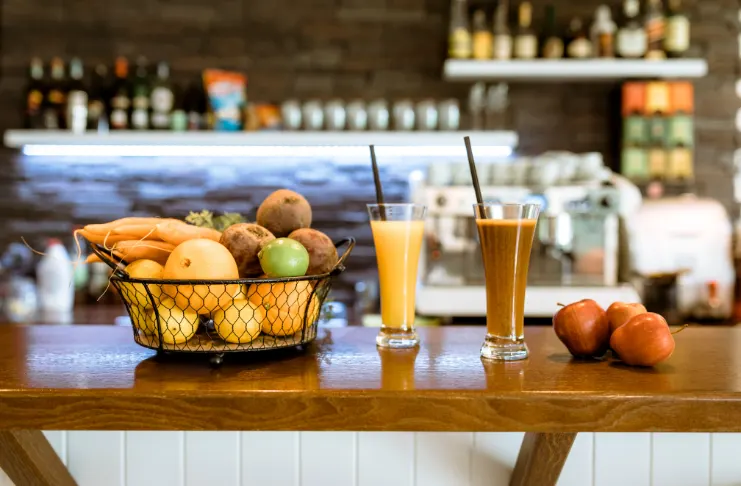
Health and hydration are central to today’s urban diets. Juice bars offer freshly prepared, nutrient-packed beverages in gyms, malls, and metro areas—catering to health-conscious, on-the-go consumers.
Why It’s Popular:
With a shift towards healthier eating, juice bars and smoothie stalls have emerged as a popular business choice in urban areas. Let’s explore why juice bars are such an attractive option:
- Focus on immunity, detox, or energy blends.
- Ideal for busy urban consumers.
- Inventory can be used in smoothies, juices, and popsicles.
Startup Cost & Returns:
Juice bars offer low overhead and high-profit potential, especially if located in high-traffic areas like gyms, malls, or office complexes. Here’s a look at the financials you need to consider when starting a juice bar business:
- Setup Investment: ₹3–6 lakhs
- Break-Even: 6–9 months (Business Today, Nov 2023)
Juice bars blend nutrition with convenience, offering a fresh business option with low entry barriers and fast ROI.
10. Homemade Pickles & Condiments
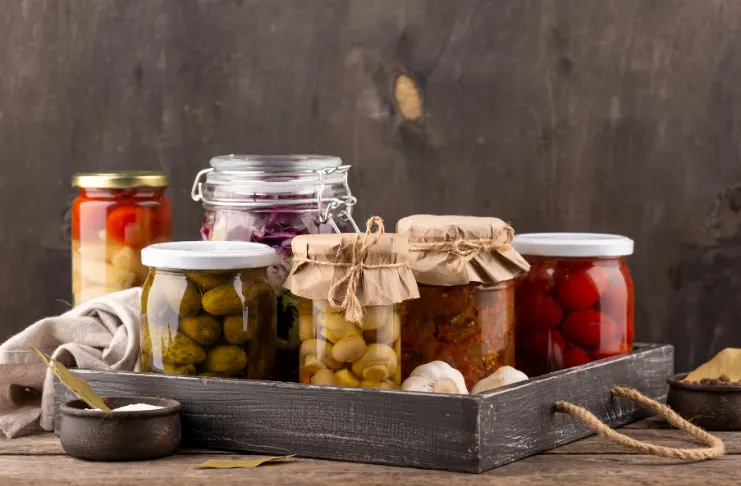
India’s rich culinary tradition includes a variety of pickles, masalas, and condiments made from time-tested recipes. These homemade offerings are now being professionally packaged and sold locally and online.
Why It’s Popular:
Pickles and condiments are an integral part of Indian cuisine, with homemade versions gaining popularity for their authenticity and rich flavors. Here’s why this food business is a hit among both local and online buyers:
- Familiar flavors connect with consumers emotionally.
- Platforms like Amazon and BigBasket expand reach.
- Perfect for home-preneurs scaling gradually.
Startup Cost & Returns:
The cost of starting a pickle and condiment business is minimal, particularly if you’re focusing on small-batch, artisanal products. Here’s a breakdown of the costs involved and what you can expect in terms of returns:
- Initial Investment: ₹50,000–2 lakhs (home-based)
- Profit Margins: 35–60%, depending on scale and sourcing
Homemade condiments are a heritage-rich, scalable venture perfect for anyone with authentic recipes and a knack for flavor.
11. Tea Cafes & Beverage Bars

India, the world’s largest consumer of tea, has seen a surge in premium tea cafés that reimagine traditional chai as an experiential product. These cafes blend innovation with nostalgia, attracting both daily drinkers and urban youth.
Why It’s Popular:
India’s love for tea is unmatched, and it has the highest consumer base. Let’s take a look at why tea cafés are a thriving business model:
- Quirky interiors and fusion blends like masala green tea, bubble tea, and iced herbal infusions attract Gen Z and millennials.
- Brands like Chaayos and Chai Point have scaled rapidly, with over 150 and 100 outlets respectively.
Startup Cost & Returns:
Tea cafés can be run on a relatively low budget, especially if you’re looking to create a cozy, minimalist environment. The profitability depends largely on location and branding. Here’s what to expect in terms of startup costs and monthly returns:
- Initial Investment: ₹10–20 lakhs (standalone café)
- Monthly Profit: ₹1–2.5 lakhs, depending on location and offerings
Modern tea cafés mix tradition with trend, offering scalable formats that cater to India’s deeply rooted tea culture.
12. Street Food Kiosks
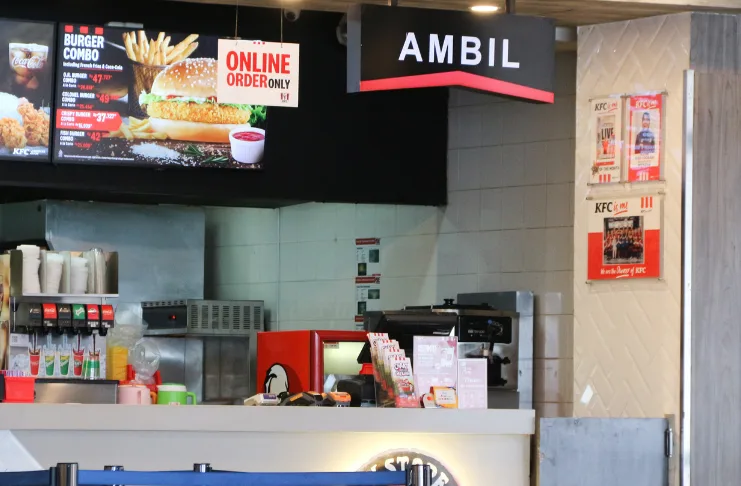
Street food has long been the soul of Indian cuisine. Kiosks offering hygienic, standardized versions of popular snacks now cater to customers who want flavor, speed, and cleanliness all in one.
Why It’s Popular:
Street food has always been a key part of Indian culinary culture, and modern street food kiosks offer a sanitized, standardized version of traditional favorites. Here’s why street food kiosks are such a popular choice for entrepreneurs:
- Dishes like chaat, momos, and pav bhaji have universal love.
- Easily deployable carts or stalls near high-footfall areas.
- Popular among college students and office goers.
Startup Cost & Returns:
Street food kiosks have one of the lowest startup costs in the food business sector, making them ideal for first-time entrepreneurs. The returns are strong, especially if you choose a high-traffic location. Here’s a detailed look at the investment and potential returns:
- Setup Cost: ₹1–3 lakhs (stall or cart)
- Daily Revenue: ₹2,000–₹10,000 depending on location
Street food kiosks deliver fast ROI and high demand, making them a staple food business choice for first-time entrepreneurs.
13. Pet Food & Gourmet Treats
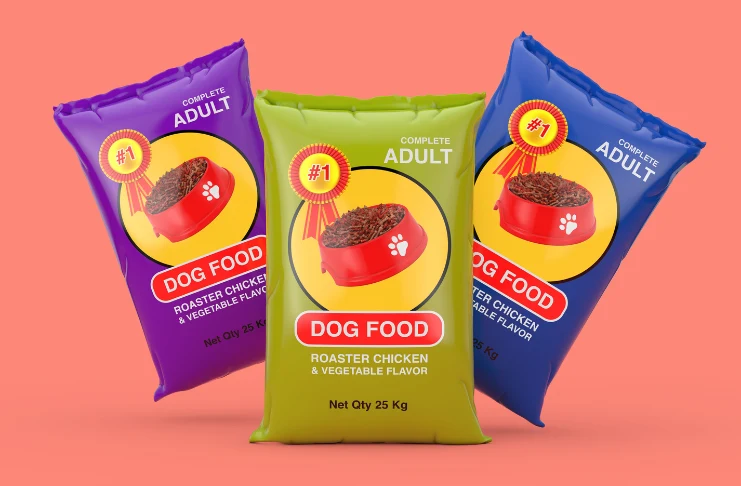
As pet parenting rises across urban India, so does the demand for nutritious, gourmet pet food. Entrepreneurs are entering this space with handmade treats, birthday cakes, and organic kibble options for dogs and cats.
Why It’s Popular:
As India’s pet ownership continues to rise, so does the demand for nutritious and gourmet pet food. Pet parents are now seeking high-quality food products for their pets, offering a lucrative opportunity for food businesses targeting the pet care industry. Here’s why this business is gaining popularity:
- Tailored diets and flavors based on breed, age, or allergy.
- Pet stores, Instagram shops, and e-commerce platforms.
Startup Cost & Returns:
The pet food industry offers an attractive margin, especially if you are focusing on gourmet, handmade, or customized treats. Here’s what you can expect in terms of investment and profitability:
- Setup Investment: ₹2–5 lakhs
- Profit Margin: 35–50%, especially for premium or handmade products
Pet food businesses are becoming a serious contender in India’s food sector, driven by rising awareness and emotional spending on pets.
14. Regional Cuisine Delivery & Dining
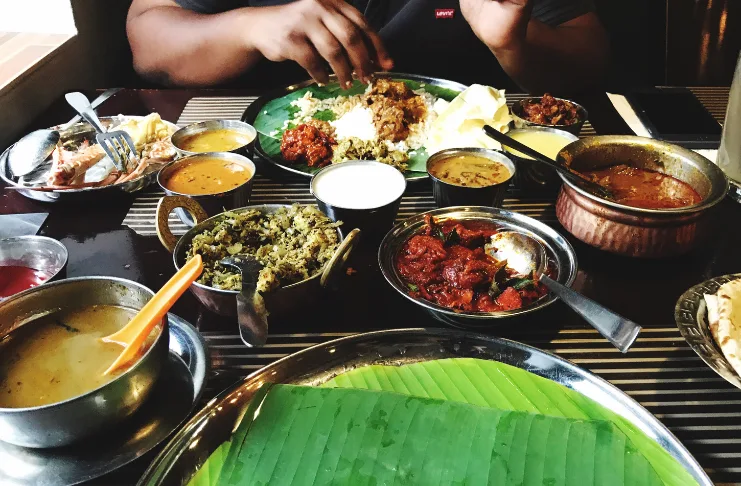
India’s diverse culinary landscape presents a golden opportunity for regional cuisine specialists. Cloud kitchens, tiffin services, and other new food business ideas or boutique restaurants focusing on authentic local flavors are gaining popularity.
Why It’s Popular:
India’s diverse culinary heritage provides an excellent opportunity to introduce regional flavors to a wider audience. Let’s take a look at why this idea is so appealing:
- Appeals to migrants craving home-style meals.
- Many regional cuisines remain underrepresented.
- Delivery apps like Zomato, direct websites, and pop-ups.
Startup Cost & Returns:
Regional cuisine businesses, whether operated from a cloud kitchen or a small-scale restaurant, offer a way to tap into nostalgia-driven demand. Here’s a breakdown of investment and potential returns for entrepreneurs looking to dive into this niche:
- Initial Investment: ₹5–10 lakhs (cloud kitchen or small dine-in setup)
- Monthly Revenue: ₹1–2 lakhs, depending on cuisine and location
Regional cuisine businesses offer a rich blend of culture and commerce, giving both chefs and consumers a taste of home in a rapidly globalizing world.
15. Ready‑to‑Cook Kits
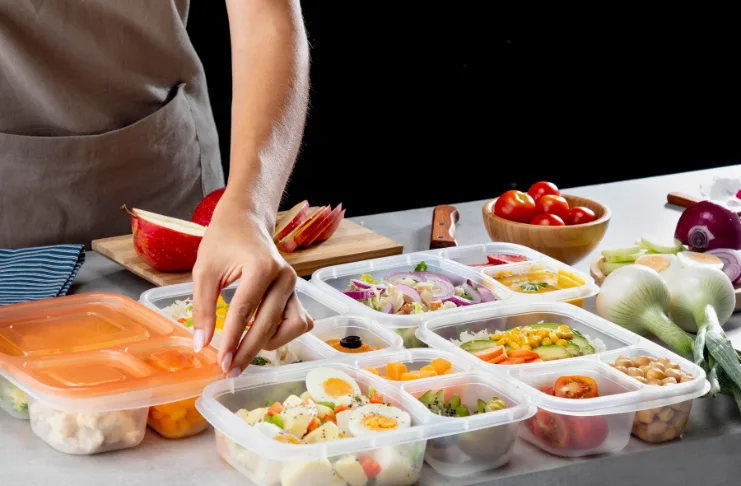
Busy professionals, students, and nuclear families are driving the rise of ready-to-cook (RTC) kits in India. These kits offer pre-measured ingredients and simple instructions to create gourmet or comfort meals at home without hassle.
Why It’s Popular:
Ready-to-cook kits meet the needs of busy individuals and families who want home-cooked meals without the hassle of meal prep. Here’s why they are becoming a sought-after option:
- Eliminates the need for meal prep while still offering a fresh-cooked experience.
- From dal makhani and dosa batter to pasta primavera and soup kits.
- Widely available via platforms like Amazon, BigBasket, and brand websites.
Startup Cost & Returns:
The setup costs for an RTC business can vary, but the returns are typically quick once you establish an e-commerce presence. Here’s a detailed look at the investment required to get started and what you can expect in terms of returns:
- Initial Setup: ₹4–7 lakhs for kitchen infrastructure and packaging
- Monthly Profit: ₹50,000–₹1.5 lakhs depending on volume and SKUs
Ready-to-cook kits blend convenience with customization, meeting modern urban India’s demand for fast, nutritious, and delicious meals.
16. Millet‑Based Products
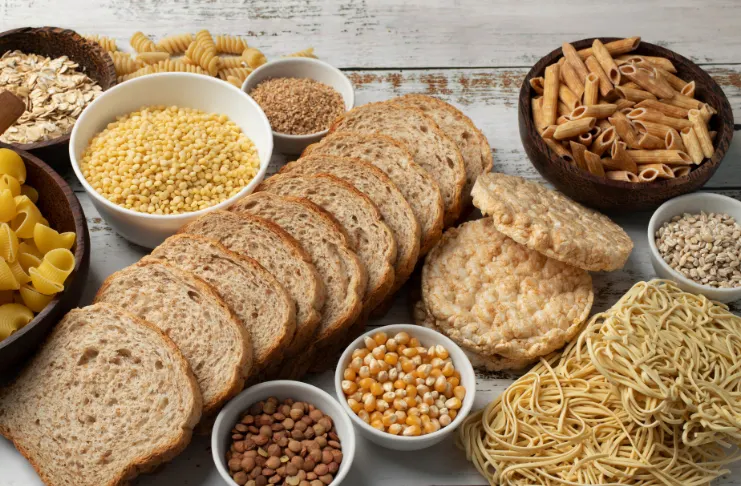
Millets, once considered humble grains, are making a massive comeback due to their nutritional benefits and government-led awareness campaigns like the International Year of Millets (2023). Health-conscious consumers are now embracing millet-based innovations, which often rely on high-quality raw materials.
Why It’s Popular:
Millet-based products are experiencing a resurgence due to their health benefits. Recognizing the nutritional benefits of millets, the Indian government rebranded them as ‘Nutri Cereals’ and declared 2018 the National Year of Millets. Building on this, the UN declared 2023 the International Year of Millets, following India’s proposal. Here’s why this sector is gaining popularity:
INDUSTRY INSIGHT
| India’s millet production saw a 27% growth, reaching 15.92 MMT. This shows how fast the grain is gaining popularity in the country. |
- Rich in fiber, protein, and essential minerals.
- Millet cookies, noodles, cereals, granola bars, and gluten-free flours.
Startup Cost & Returns:
Millet-based products offer a strong return on investment due to their nutritional benefits and growing consumer awareness. Here’s a breakdown of the investment required and expected profits:
- Startup Investment: ₹3–6 lakhs
- ROI: 25–40% profit margins depending on product type and distribution reach
With shifting health trends and millet’s nutritional advantages, millet-based food ventures offer a sustainable and profitable path forward.
17. Artisanal Cheese & Dairy Products
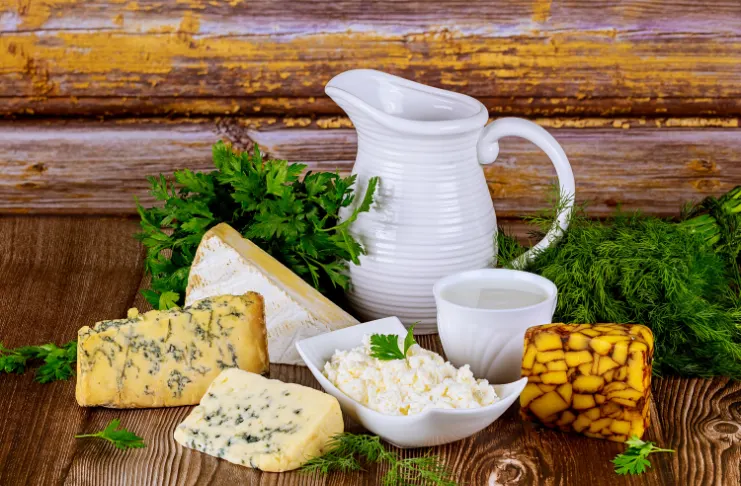
India’s food culture is expanding beyond traditional dairy products, with artisanal cheese and premium dairy items gaining popularity. These products cater to a growing market of food enthusiasts and health-conscious consumers seeking higher-quality, locally produced alternatives.
Why It’s Popular:
Artisanal cheese and dairy products are experiencing a rise in demand as consumers seek healthier, more authentic food options. Here’s why this niche is gaining traction:
- With growing affluence, more people are willing to pay a premium for high-quality, locally sourced dairy products.
- Consumers are increasingly aware of the health benefits of organic and minimally processed dairy items, such as raw milk cheeses and probiotic-rich yogurts.
- The rise in gourmet dining and food tourism has created a space for premium dairy products in urban areas.
Startup Cost & Returns:
Starting an artisanal cheese and dairy business requires expertise in production and access to high-quality ingredients. However, the potential for high-margin products in this space makes it an appealing venture for entrepreneurs with a passion for craft dairy.
- Startup Cost: ₹8–20 lakhs, depending on scale and equipment.
- Margins: 40–70% depending on the product range (e.g., cheese, yogurt, etc.) and market positioning.
Artisanal cheese and dairy products are a burgeoning niche, offering significant potential for growth and profitability in a health-conscious market.
18. Vegan Food Places

The rise of plant-based diets and environmental concerns has led to a surge in the number of vegan restaurants and eateries across India.
Why It’s Popular:
As veganism and plant-based diets continue to gain popularity, more consumers are seeking dedicated vegan eateries that cater to their dietary preferences. Here’s why vegan food places are thriving:
- More people are adopting plant-based diets for their health benefits, including weight management and lower risks of chronic diseases.
- Vegan diets have a lower carbon footprint compared to meat-based diets, attracting environmentally conscious consumers.
- Vegan restaurants are now offering innovative and delicious dishes, including plant-based meat substitutes, dairy-free desserts, and global vegan cuisines.
Startup Cost & Returns:
Opening a vegan food place can be a highly profitable venture, especially in urban areas with a growing demand for sustainable, plant-based dining options. The costs depend on the scale of the restaurant and its location, but the returns can be substantial with the right strategy.
- Startup Cost: ₹10–25 lakhs depending on location, size, and restaurant format (e.g., café, fine dining).
- Margins: 25–40% depending on location, menu pricing, and customer base.
Vegan food places offer a unique opportunity for entrepreneurs to tap into the growing demand for plant-based, sustainable dining options, making it a lucrative investment in the evolving food industry.
Conclusion
As we’ve explored throughout this journey, India’s food landscape presents a banquet of opportunity for passionate entrepreneurs. In a nation where food transcends mere sustenance to become an expression of culture and community, those who approach the business with both respect for tradition and an eye toward innovation will find themselves not just building profitable enterprises but also contributing to the next exciting chapter of India’s rich gastronomic story.
Frequently Asked Questions
1. What is the most profitable food business in India?
Cloud kitchens or ghost kitchens are India’s most profitable food business due to low overhead costs and high demand.
2. Which food startup is best in India?
Zomato and Swiggy are among the best food startups in India, revolutionizing the online food delivery and restaurant aggregation sectors.
3. Which food products are most in demand in India?
Ready-to-eat meals, snacks, packaged beverages, and health-conscious food products are among the most in-demand food items in India.
4. Which food shop is most profitable?
Quick-service restaurants (QSRs) and cloud kitchens are the most profitable food shop models in India due to their scalability and low overhead costs.
5. What is the most profitable food to sell in India?
Fast food, particularly burgers, pizzas, and biryanis, is the most profitable food to sell in India, with high demand and quick turnaround.
6. Which food industry is most profitable?
The packaged food industry, especially in segments like snacks and ready-to-eat meals, is the most profitable food industry in India.
7. Which type of food business is best in India?
Cloud kitchens, catering services, and food trucks are considered some of the best types of food businesses in India due to their scalability and low initial investment.
8. What food makes the most profit?
Pizza, burgers, and biryanis are among the most profitable food items in India, with high margins and consistent demand.
9. What type of food is most profitable?
Fast food and quick-service restaurant items, such as pizzas, burgers, and sandwiches, are the most profitable types of food in India.
10. Which food business is most profitable in India?
Cloud kitchens are the most profitable food business in India due to their minimal capital investment and the growing online food delivery trend.
11. What is the most profitable food item?
Pizza and biryani are among the most profitable food items in India, with high demand and excellent margins.





